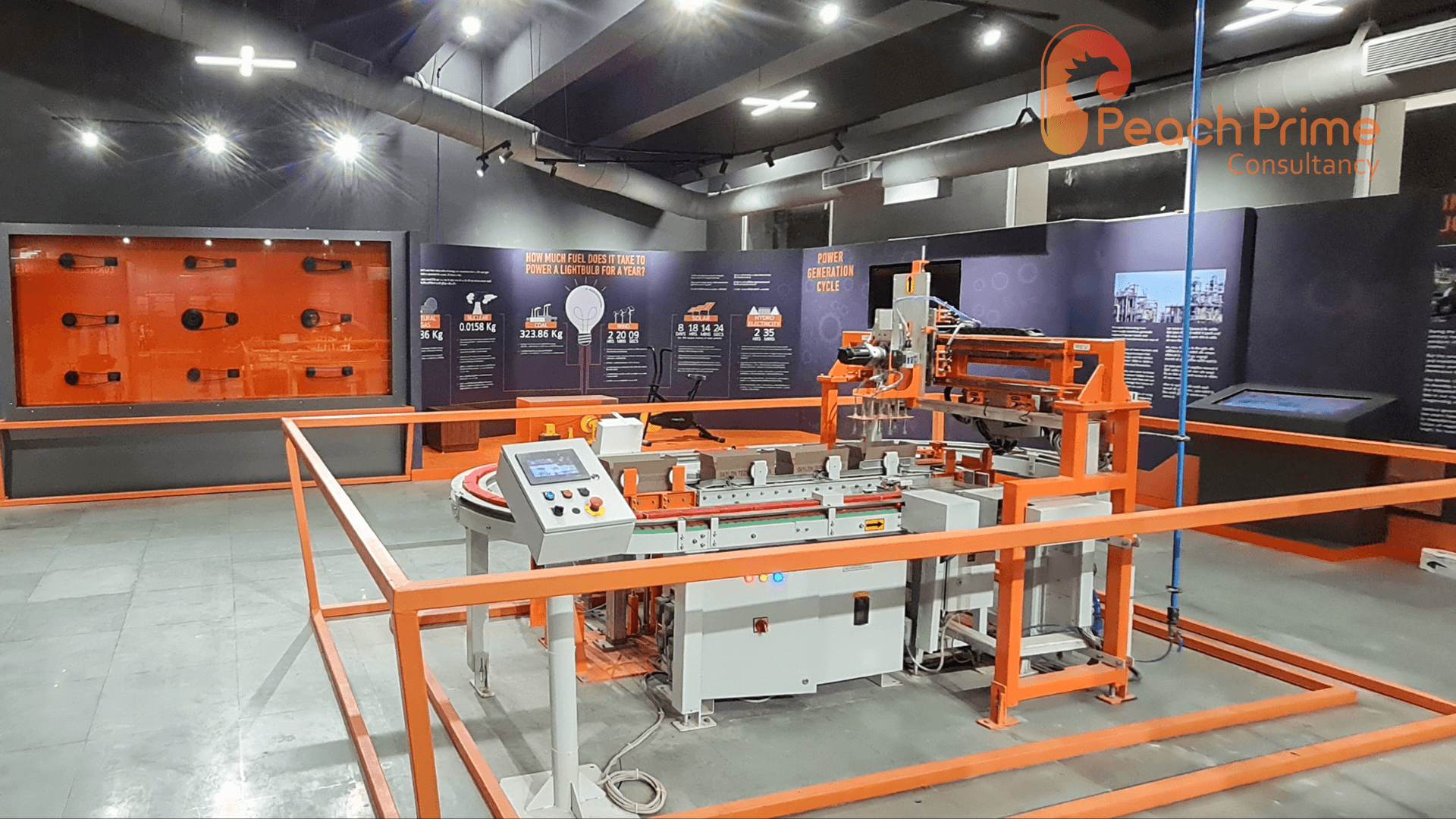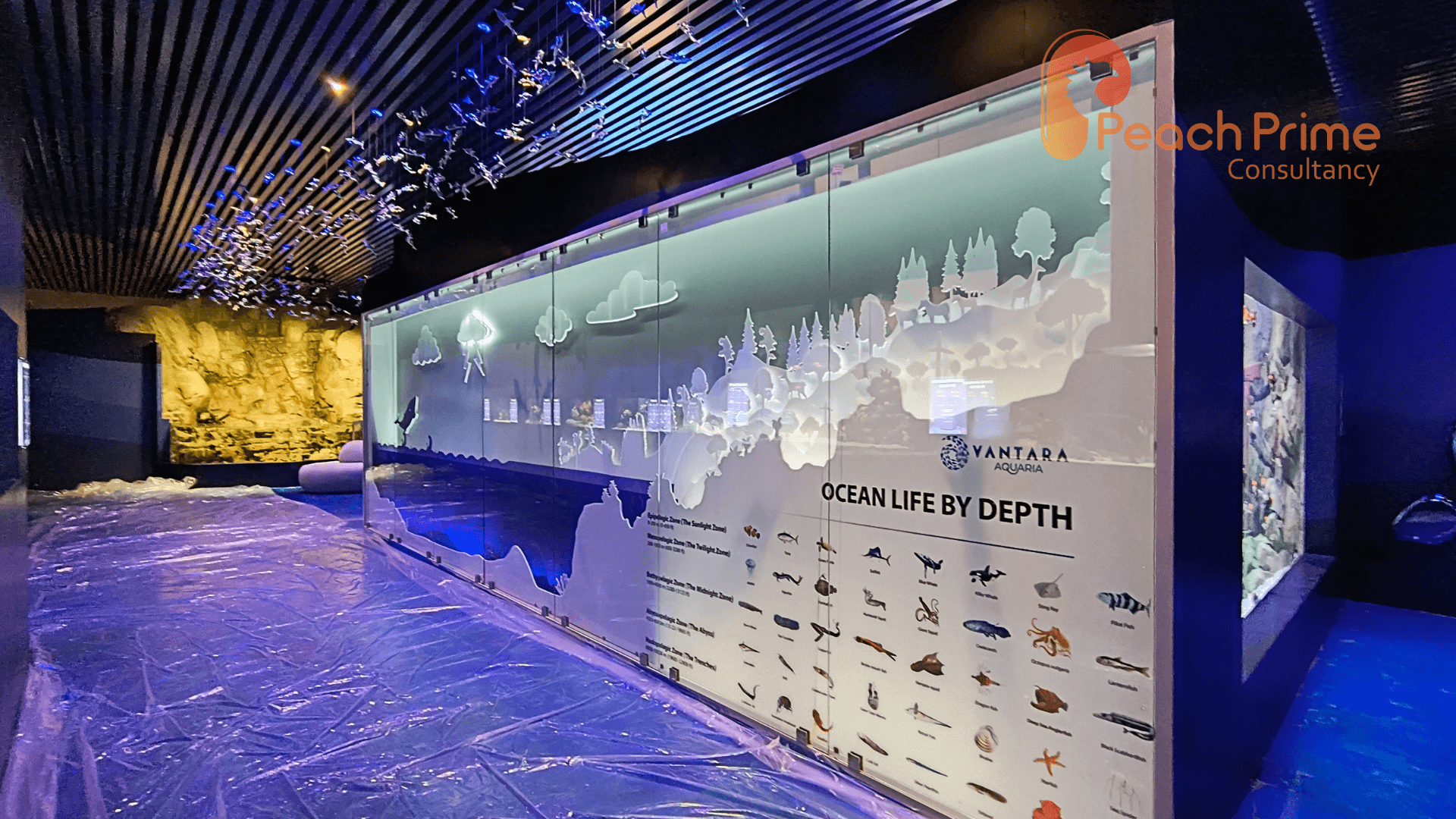Museum Planning
- Establishing Museum Vision and Goals
Museum planning starts with clearly defining the vision and objectives of the project. At Peach Prime Consultancy, we collaborate with stakeholders to identify the museum’s purpose, target audience, and core themes. This phase ensures that the museum’s mission is aligned with the community’s needs and the educational goals. A clear vision helps guide the overall design, exhibits, and visitor experience, ensuring a meaningful and impactful project.
- Evaluating Site Suitability
Evaluating the site’s suitability is a crucial step in museum planning. We analyze various factors such as location, accessibility, surrounding infrastructure, and environmental conditions. This ensures the site is practical for both the museum’s long-term sustainability and visitor convenience. We also consider zoning regulations and the site’s potential to accommodate the specific needs of the museum, ensuring a functional and attractive space for future visitors.

- Financial Feasibility and Budgeting
Developing a financial plan is essential for the museum’s success. We create a comprehensive budget that includes construction costs, exhibit development, staffing, and operational expenses. Our team also identifies potential sources of funding, such as government grants, sponsorships, and private donations. A solid financial strategy ensures that the museum is not only built within budget but also remains financially sustainable in the long run, supporting ongoing operations.
- Risk Assessment and Regulatory Compliance
Navigating legal and compliance requirements is crucial to ensuring the smooth development of a museum. We help secure necessary permits, ensure compliance with local regulations, and adhere to building codes. This includes addressing environmental impact assessments, accessibility standards, and any other legal considerations. By managing the regulatory process effectively, we minimize potential delays, ensuring the project stays on track and meets all legal and safety standards.

Related Projects
History Gallery
- FEC Museums & Exhibits Theme Park
VR Gallery
- FEC Museums & Exhibits Theme Park
Fundamental Gallery
- FEC Museums & Exhibits Theme Park
Planetarium
- FEC Museums & Exhibits Theme Park
Astronomy And Space science gallery
- FEC Museums & Exhibits Theme Park
5D Theatre – Science City
- FEC Museums & Exhibits Theme Park
5D Theatre – RSC – Rajkot
- FEC Museums & Exhibits Theme Park
Bowling Alley
- FEC Theme Park
Game Zone, Ranip
- FEC
Game Zone, thoothukudi
- Feasibility Report FEC
Game Zone, Imax
- FEC
Game Zone, Dubai Mall
- Feasibility Report FEC
CBS Game Zone
- FEC
Noble Gallery, RSC Rajkot
- Museums & Exhibits
Glass & Ceramic Exhibits gallery
- Museums & Exhibits
Regional Science Museum
- Museums & Exhibits
Life Science Gallery – RSC Rajkot
- Museums & Exhibits
Machine Gallery – RSC Rajkot
- Museums & Exhibits
Robotics Gallery – RSC Rajkot
- Museums & Exhibits
How Stuff Works – RSC Rajkot
- Museums & Exhibits
Robo cafe
- Museums & Exhibits
Sports Robot
- Museums & Exhibits
Interactive Robot
- Museums & Exhibits
Robotics Museum at Science City
- Museums & Exhibits
VR Gallery at Robotics Museum
- FEC Museums & Exhibits
Optimus Prime-Robotics Museum
- Museums & Exhibits Sculptures
Hanging Fish Sculpture
- Museums & Exhibits Sculptures
Interactive Projection
- Museums & Exhibits
Mermaid Vista
- Aquarium Museums & Exhibits
Flow Your Fish
- Aquarium Museums & Exhibits
Ocean Wall
- Aquarium Museums & Exhibits
DPR for Tender
- Project Overview and Scope
A Detailed Project Report (DPR) for tender begins with a comprehensive overview of the project and its scope. At Peach Prime Consultancy, we define the project’s objectives, deliverables, and key milestones, outlining the overall vision. This phase includes a clear description of the project’s components, such as design, construction, and operations, ensuring that all aspects are aligned with the tender requirements. The scope serves as a foundation for the entire project, guiding the tender process.
- Technical Specifications and Design Plans
The DPR includes detailed technical specifications and design plans. We provide in-depth descriptions of the materials, technologies, and methods to be used throughout the project. This includes architectural layouts, engineering drawings, and site plans that demonstrate the technical feasibility of the project. By presenting clear and accurate design information, we ensure that all stakeholders understand the project’s requirements, and it meets the tender’s technical criteria.

- Financial Projections and Budgeting
A crucial element of the DPR is detailed financial projections and budgeting. We create a comprehensive cost estimate that includes construction, materials, labor, and operational expenses. This section outlines anticipated revenue streams, funding sources, and a clear breakdown of the project’s financial feasibility. By providing detailed financial data, we ensure the tender submission is robust and demonstrates the project’s financial viability, helping secure the necessary approvals and funding.
- Risk Assessment and Compliance
The DPR addresses risk assessment and compliance with legal, regulatory, and safety requirements. We identify potential risks related to construction, operation, and market conditions and develop mitigation strategies. Additionally, the DPR ensures that the project complies with all relevant local laws, building codes, and safety regulations. the DPR ensures that the project complies with all relevant local laws, building codes, and safety regulations.

Related Projects
History Gallery
- FEC Museums & Exhibits Theme Park
VR Gallery
- FEC Museums & Exhibits Theme Park
Fundamental Gallery
- FEC Museums & Exhibits Theme Park
Planetarium
- FEC Museums & Exhibits Theme Park
Astronomy And Space science gallery
- FEC Museums & Exhibits Theme Park
5D Theatre – Science City
- FEC Museums & Exhibits Theme Park
5D Theatre – RSC – Rajkot
- FEC Museums & Exhibits Theme Park
Bowling Alley
- FEC Theme Park
Game Zone, Ranip
- FEC
Game Zone, thoothukudi
- Feasibility Report FEC
Game Zone, Imax
- FEC
Game Zone, Dubai Mall
- Feasibility Report FEC
CBS Game Zone
- FEC
Noble Gallery, RSC Rajkot
- Museums & Exhibits
Glass & Ceramic Exhibits gallery
- Museums & Exhibits
Regional Science Museum
- Museums & Exhibits
Life Science Gallery – RSC Rajkot
- Museums & Exhibits
Machine Gallery – RSC Rajkot
- Museums & Exhibits
Robotics Gallery – RSC Rajkot
- Museums & Exhibits
How Stuff Works – RSC Rajkot
- Museums & Exhibits
Robo cafe
- Museums & Exhibits
Sports Robot
- Museums & Exhibits
Interactive Robot
- Museums & Exhibits
Robotics Museum at Science City
- Museums & Exhibits
VR Gallery at Robotics Museum
- FEC Museums & Exhibits
Optimus Prime-Robotics Museum
- Museums & Exhibits Sculptures
Hanging Fish Sculpture
- Museums & Exhibits Sculptures
Interactive Projection
- Museums & Exhibits
Mermaid Vista
- Aquarium Museums & Exhibits
Flow Your Fish
- Aquarium Museums & Exhibits
Ocean Wall
- Aquarium Museums & Exhibits


















